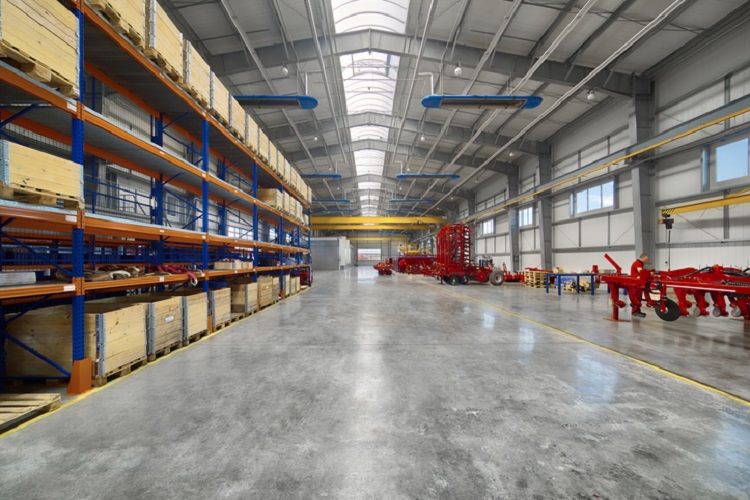When it comes to maintaining a warehouse, insulation is a critical element in ensuring the building is energy-efficient, comfortable, and cost-effective. However, many warehouses experience insulation-related issues that can impact temperature control, energy usage, and overall operational efficiency. In this article, we will explore five common insulation problems in warehouses and offer practical solutions to address them.
Table of Contents
Insufficient Insulation Coverage
Problem:
One of the most common insulation problems warehouses face is insufficient coverage. In many cases, areas of the warehouse may not be properly insulated, leading to heat loss during the winter and heat gain during the summer. This inefficiency can cause the HVAC system to work harder, driving up energy costs.
Effects:
- Difficulty maintaining a consistent temperature throughout the warehouse.
- Increased energy consumption and higher utility bills.
- Discomfort for employees, which can impact productivity.
Solutions:
- Conduct a professional insulation audit to assess which areas are under-insulated.
- Consider adding insulation to uncovered or poorly insulated sections.
- For hard-to-reach areas, use spray foam or batt insulation to fill gaps. Spray foam, in particular, expands to fill cracks and crevices, ensuring a more uniform coverage.
Moisture Build-Up in Insulation
Problem:
Moisture buildup in insulation materials is a problem that can significantly reduce insulation’s effectiveness. Moisture may infiltrate insulation through leaks in the roof, walls, or windows, or from excessive humidity in the warehouse environment. This can cause the insulation to lose its thermal resistance and even lead to mold growth.
Effects:
- Reduced insulation efficiency, making it difficult to control temperatures.
- Increased risk of mold growth and structural damage to the building.
- Poor indoor air quality can negatively impact worker health.
Solutions:
- Improve ventilation throughout the warehouse to reduce humidity levels and prevent condensation.
- Install vapor barriers during insulation application to prevent moisture penetration.
- Regularly inspect the warehouse for leaks and repair them promptly. Pay special attention to the roof and windows, where water damage is most common.
Effects of Thermal Bridging
Problem:
Thermal bridging occurs when heat passes through materials that are more conductive than the insulation, such as metal beams, steel studs, or concrete. These materials create a path for heat to bypass the insulation, leading to temperature imbalances and inefficiency in energy use.
Effects:
- Uneven temperatures throughout the warehouse, with cold spots near metal or concrete structures.
- Increased heating or cooling demands due to heat loss or gain in the thermal bridge areas.
- Condensation in cold spots could lead to moisture problems and mold.
Solutions:
- One effective solution to combat thermal bridging is using thermal break materials, which are designed to stop heat from transferring through structural components.
- Incorporate continuous insulation systems to eliminate gaps where thermal bridging can occur. This might involve upgrading to better insulation materials that provide superior resistance to thermal flow.
- Consult with insulation specialists to address the problematic effects of thermal bridging and find tailored solutions for your warehouse’s specific design and structure.
IV. Aging or Deteriorating Insulation
Problem:
Over time, insulation materials can deteriorate due to age, environmental conditions, or physical damage. Old insulation may compress, degrade, or lose its insulating properties, leading to a decline in energy efficiency.
Effects:
- Reduced R-value (thermal resistance), causing a drop in the insulation’s ability to maintain temperature.
- Drafts and temperature fluctuations throughout the warehouse.
- An increase in heating and cooling costs as the HVAC system compensates for the loss of thermal efficiency.
Solutions:
- Inspect insulation regularly and replace old or deteriorating materials with newer, higher-performance options.
- Upgrade to spray foam or rigid foam insulation for better longevity and insulation properties. These materials are more resistant to environmental wear and tear.
- Schedule routine maintenance checks to monitor the condition of insulation and identify any potential issues early on.
Improper Installation of Insulation
Problem:
Improper installation of insulation can lead to inefficiency, even if the materials are high-quality. Insulation may be poorly fitted, causing gaps, compression, or uneven coverage. These installation errors compromise the insulation’s performance and could lead to temperature imbalances in the warehouse.
Effects:
- Uneven temperatures can make certain areas of the warehouse uncomfortable to work in.
- Reduced thermal resistance, requiring the HVAC system to work harder.
- Increased energy bills and potential equipment malfunctions due to fluctuating temperatures.
Solutions:
- Hire certified professionals for the installation of insulation to ensure it meets the manufacturer’s guidelines.
- Verify that insulation is installed correctly, with no gaps, compression, or areas left uninsulated.
- Conduct quality checks after installation to ensure uniformity and efficiency across the entire warehouse.
Conclusion
Proper insulation is essential for maintaining an energy-efficient, comfortable, and safe warehouse environment. From insufficient insulation coverage to issues with thermal bridging, aging materials, and poor installation, addressing these common insulation problems will help reduce energy costs, improve temperature control, and protect the overall health of the building. Regular inspections, professional audits, and timely repairs are key to ensuring your warehouse remains well-insulated for the long term.

